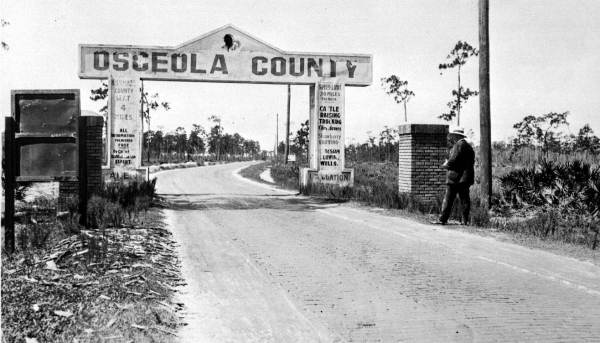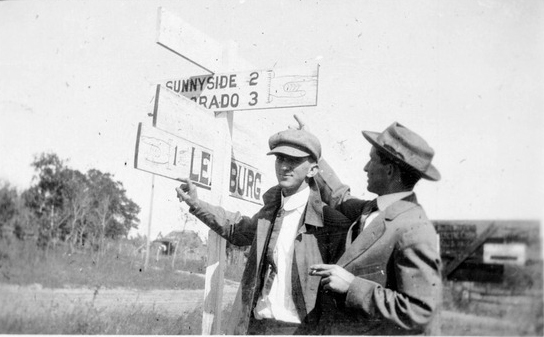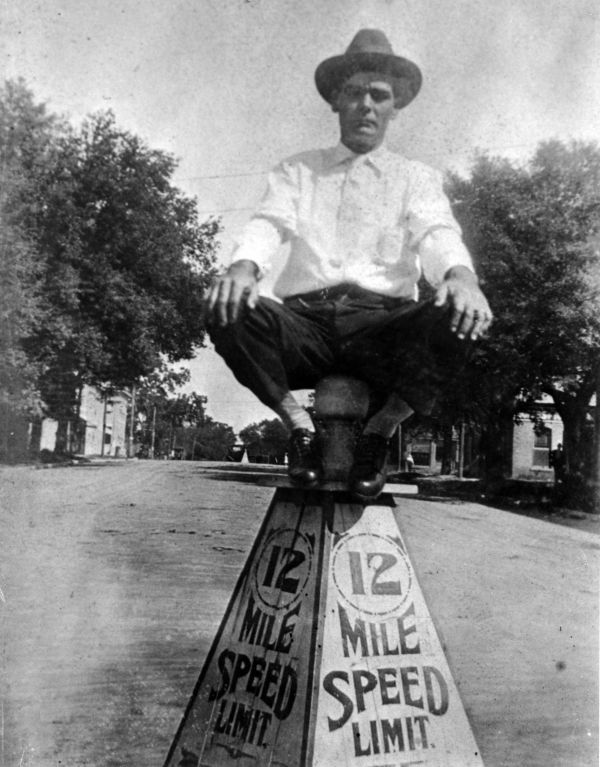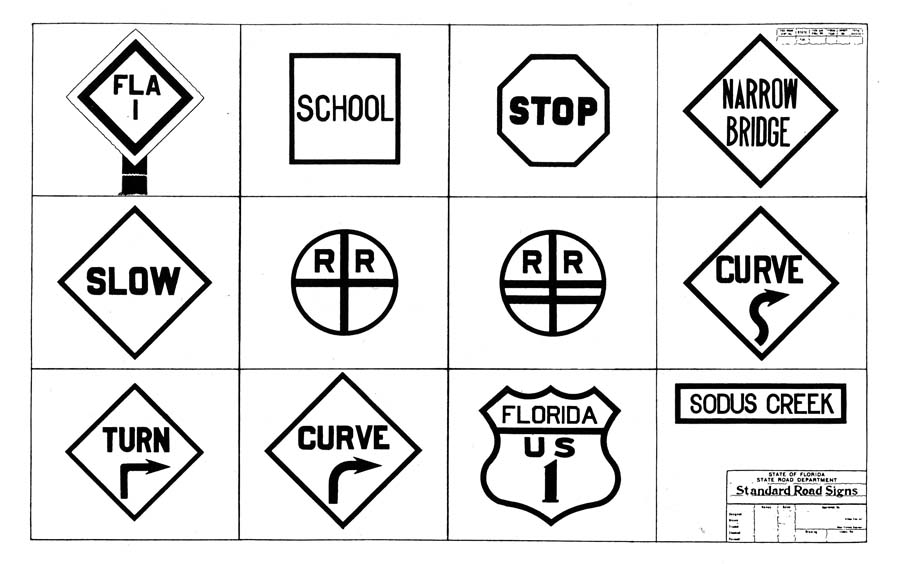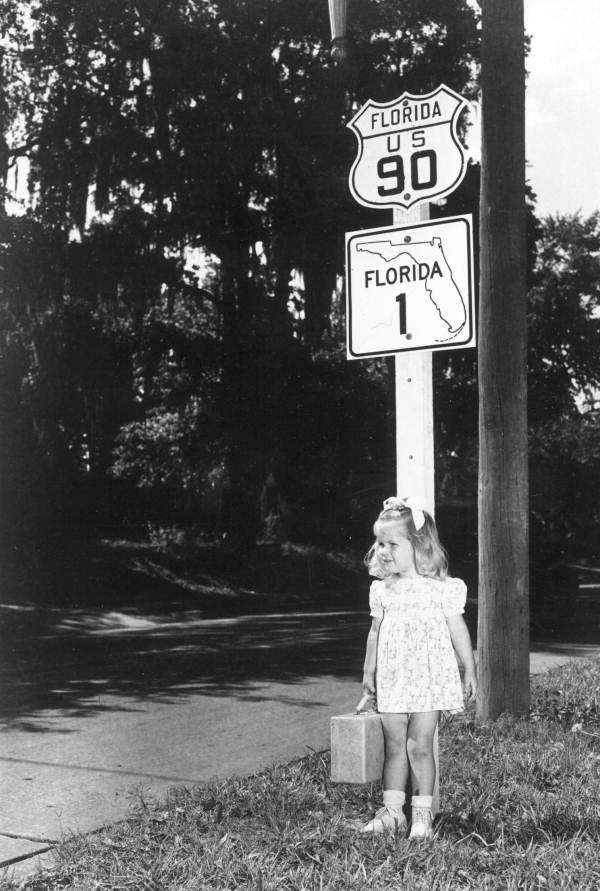Description of previous item
Description of next item
Signs of the Times
Published October 10, 2015 by Florida Memory
Signs are a critical part of driving. They tell us what road we’re on, how fast we can safely travel, what obstacles lie ahead, and how far we have left to the next major landmark. Road signage is especially important in a state like Florida, which hosts millions of tourists each year. After all, nothing ruins a vacation as quickly as getting lost, right?
As important as they are in the here and now, signs also have a history. Changes in road signage over time are in many ways reflections of changes in the broader history of the state.
When automobiles first came on the scene at the turn of the 20th century, there wasn’t much precedent for how the roads would be signed. Cities and towns often signed their local streets, but seldom were the roads outside of town well-marked, and numbered routes like we have today were almost entirely unheard of. Animal-powered carriages and carts had no speedometers, so there was no use in posting a speed limit. The general rule was to drive sensibly, and ask for directions if you lost your way.
Automobiles made it easier for folks to travel farther away from home. They also traveled faster, which made driving more hazardous, especially on curves and near intersections with other roads and railroads. Some local communities began posting signs to help visitors find their way more easily. Businesses often did the same, combining safety messages and directional information with advertising.
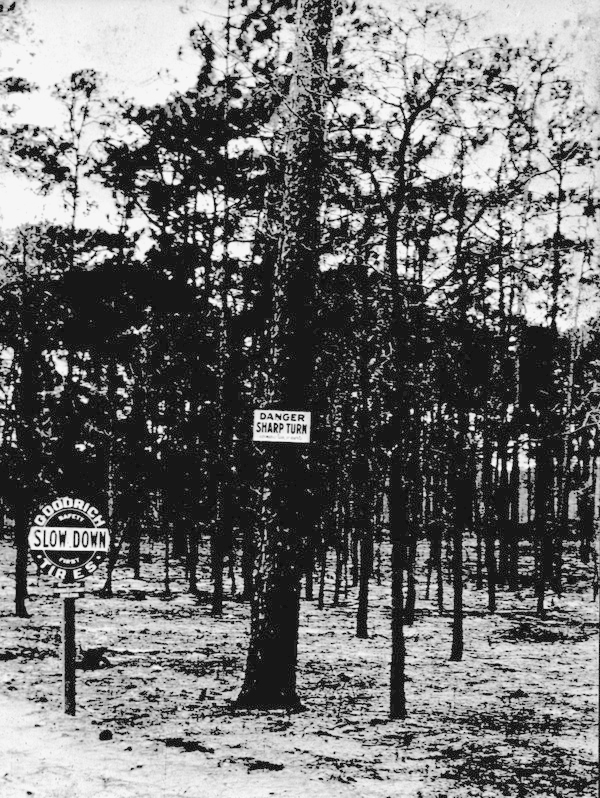
It was awfully nice of Goodrich Tires to post this sign near De Leon Springs warning motorists to slow down, but notice they did a little advertising at the same time (circa 1915).
One of the key characteristics of road signs during this period was the lack of standardization. Public and private entities made signs using whatever colors, shapes, and materials they believed suited their purposes. The result was a bewildering array of road signs so thick motorists often had to slow down or stop completely to read them.
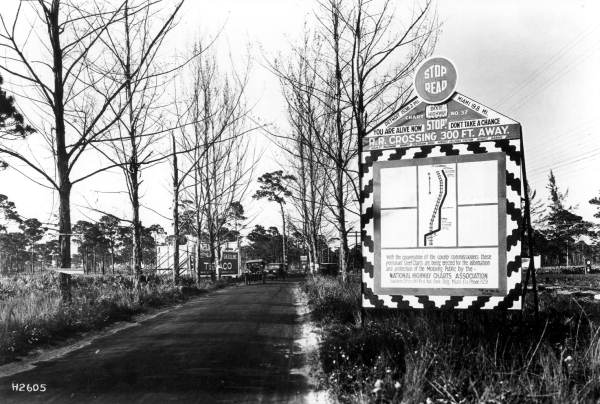
This somewhat complicated sign warned motorists of an approaching railroad crossing along the Dixie Highway (1924).
Florida wasn’t the only state having this problem, and it wasn’t long before highway officials across the country decided it was time for a solution. In November 1925, the American Association of State Highway Officials met in Detroit and agreed upon a system of standardized highway signs to recommend to their respective states. Florida’s State Road Department chose to accept the suggested signage, and by the 1930s the signs along the state roadways were beginning to look more uniform. The Legislature also began restricting the number and placement of billboards to make things less confusing for motorists.
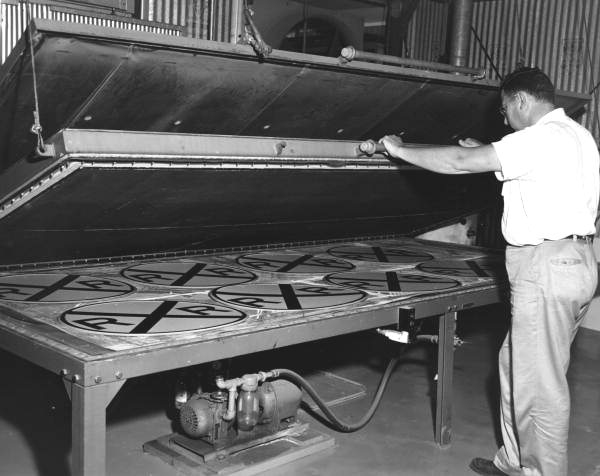
A State Road Department employee works on a batch of standardized railroad crossing signs at the Department’s sign shop in Lake City (circa 1950s).
A few additional changes have happened over the years. The signs marking U.S. highway routes, for example, were originally die-cut to be shaped like shields. These were later replaced by cheaper square signs with the U.S. shield and number printed on them.
In 1956, Florida implemented a system of color-coded U.S. highway signs to help motorists more easily follow their desired routes. The color-coded system was later discontinued because the colored signs faded faster and had to be replaced more often than the standard black and white ones.
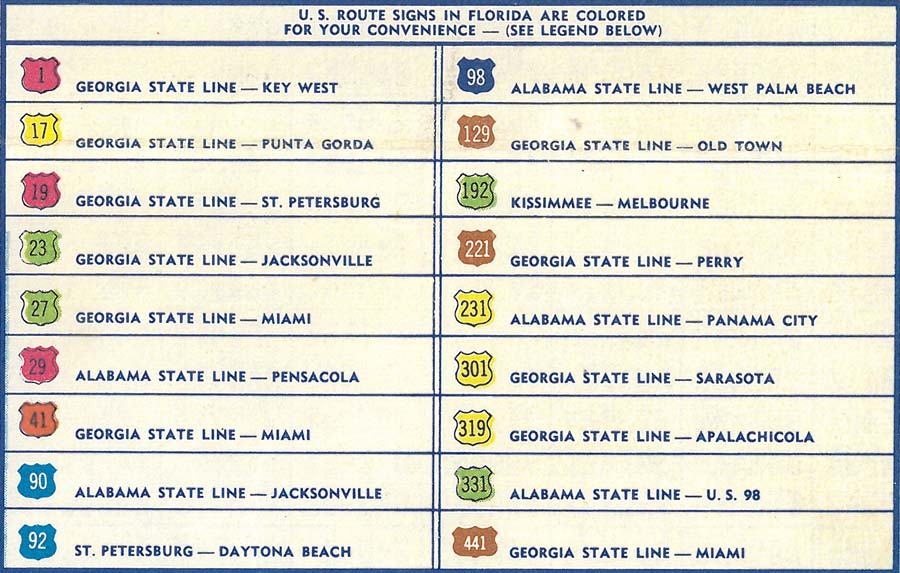
Key from an official map published by the Florida State Road Department describing the color coding system for U.S. highways (1957).
As roads grew wider and speeds grew faster, it also became necessary to posts signs that would be highly visible from all travel lanes. This was especially important near exits and entrances on the freeways, so motorists could choose the correct lane well ahead of an intersection. As a result, signs became larger and many were placed overhead so they could be viewed more easily from the inner travel lanes.
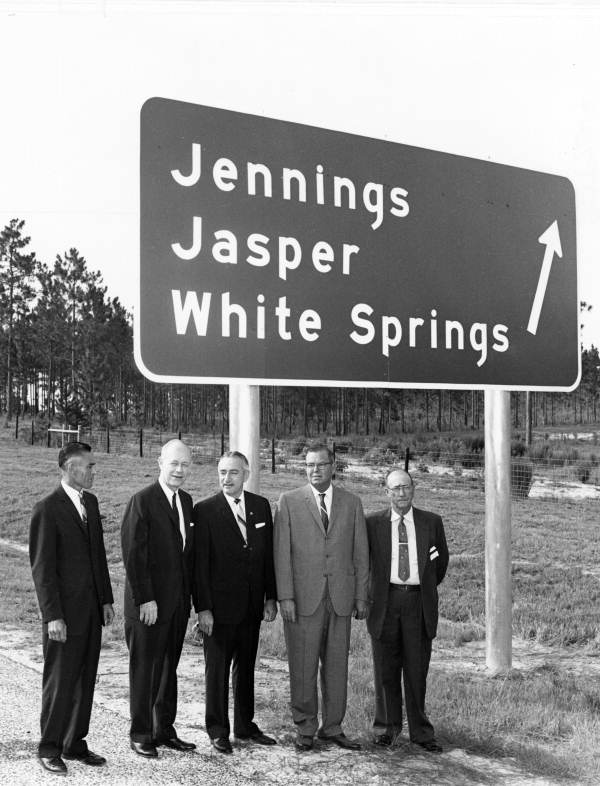
Governor Farris Bryant (second from left) stands with a group of men in front of a large sign along a new section of Interstate 75 in Hamilton County (1964).
Road signs are just one example of commonplace objects with a story to tell about Florida’s history. What other objects can you think of that have changed over the years? Start a conversation by sharing this post on Facebook or Twitter!
Also, if you happen to live near Tallahassee or will be passing through sometime soon, stop by the State Library & Archives to have a look at our extensive map collection. Our holdings include a variety of local, county, and state highway maps dating back to the earliest years of the automobile age!
Cite This Article
Chicago Manual of Style
(17th Edition)Florida Memory. "Signs of the Times." Floridiana, 2015. https://www.floridamemory.com/items/show/297528.
MLA
(9th Edition)Florida Memory. "Signs of the Times." Floridiana, 2015, https://www.floridamemory.com/items/show/297528. Accessed December 28, 2025.
APA
(7th Edition)Florida Memory. (2015, October 10). Signs of the Times. Floridiana. Retrieved from https://www.floridamemory.com/items/show/297528

 Listen: The Bluegrass & Old-Time Program
Listen: The Bluegrass & Old-Time Program